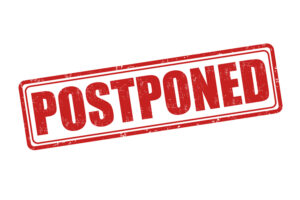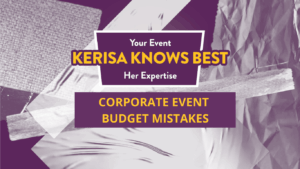The most common (and difficult!) question asked by Event Marketers is:
How do I evaluate the success of my face-to-face marketing program?
Which is closely followed by: How do I capture the right data?
Like so many things, it depends. Specifically, it depends on your goals and objectives for your program. For example, if your event is primarily planned for lead generation purposes, then it will be important to have a mechanism to capture leads, score them based on pre-set criteria, and follow them through the sales cycle to evaluate quality of the leads and how they contribute to sales. On the other hand, if you are looking to build brand awareness and activation, you might conduct pre and post brand awareness surveys or track total visitors and social media engagement.
OBJECTIVES
Regardless of your program’s goals, the first step is to document quantifiable objectives. Be as specific as possible and base your objectives on historic, real information. Another important consideration is to understand what is different about your program this year that would affect results versus prior years. For example, if your company has exhibited at a particular trade show for several years and each year you collected approximately 100 qualified leads at the show, then all things being equal, it stands to reason that you will collect approximately 100 leads this year. However, if you have added a sponsorship or an integrated social media campaign, you will likely generate more leads and should adjust your objective accordingly.
With respect to the point about being specific, all booth visitor interactions are not created equal. It is important to define what “counts” as a qualified lead. Depending on your product line and the attendee personas at the show, any visitor who exchanges information (e.g. completes a survey or allows a badge scan) with you would count as a lead. In other cases, you might define a qualified lead as an attendee who has overtly expressed that they are shopping for a solution or that they intend to issue an RFP next month and are vetting potential candidates. You may also have a highly profiled target list of prospects and your objective is to secure prescheduled meetings with a specific number of those prospects.
As much as your focus is on quality engagements during the event, don’t forget about the importance of your pre-, during and post- event marketing activities. Establishing goals and measuring results here is important as well.
DATA CAPTURE
With your objectives clearly set, the next order of business is laying out exactly how you intend to capture actual results to measure against your objectives. Here there are two considerations:
What do you need to achieve?
What have you historically achieved?
If there is a major difference between those two measures, you want to make sure that there is something new and different in your program to help make up the difference.
Establishing baseline measures is important at this stage. Select a date (ideally the end of a period to make it easier on you) and record your current metrics. For example, record the number of LinkedIn connections and Twitter followers your company has as of that date. Use whatever social media and digital channels are important to your company to establish a baseline measurement.
You very likely will supplement your exhibit with email and web landing pages so you will want to make sure that each of these tactics is set up for tracking and attribution. You also want to think about how long after the event you will continue to measure results and attribute them to the event.
At the actual event, you need to have your data capture method selected, tested and ready to go before the show opens. If you plan to qualify and score leads based upon set criteria, make sure your lead capture app has been programmed for those attributes. For example, if urgency is a key criterion as to how you score a lead, make sure that you have a mechanism for the attendee to submit that information or for your brand ambassadors to capture it.
LEAD FOLLOW-UP & VALIDATION
It is important to reach out to all visitors in a timely fashion, thanking them for their time and, as appropriate, provide follow up material. For most visitors, your follow up material is relatively general because they are not active in the sales cycle. But for those attendees who represent bona fide opportunities, you want your follow up to be timely and specific to their needs.
The validation step is about objectively reviewing all leads captured at the event and modifying lead score if necessary. Also, if your product is purchased by a company vs. individuals, you want to consolidate leads by company to reduce counting duplicates. You may also find that you want to remove certain visitors that you know will never become customers.
ONGOING TRACKING
Depending on how you stated your objectives, as well as your sales cycle, the task now is to periodically evaluate results. If your goal was brand awareness, you likely set a timeline upon which you wanted to see an increase in awareness. In that case, you would make your assessment and document your results. If your goal was lead generation, then you will want to capture # of leads as a result of the event, but then periodically report on how many of those leads resulted in sales and at what dollar amount? For transactional businesses, you might only measure lead conversions to sales for 30 days or perhaps 3 months. For products and services with longer sales cycles, you might continue to track sales for two or three years.
ANALYSIS & STOP, START, CONTINUE
Perhaps the most important thing you can do when measuring your face-to-face program results is to provide contextual analysis of what worked and what needs improvement. While it is very gratifying to be able to say, “My program generated 30% more leads than our goal,” it is important to be able to articulate why that happened so that you can continue to improve your program. Consider any changes you made to the program, tactics you added, altered messaging, more experienced brand ambassadors or other changes that would help to explain your results.
An important exercise to conduct while the event is still fresh in everyone’s memory is Start, Stop, Continue. This is a framework to capture what worked well and should be continued in future events, what didn’t work as well and should be eliminated from the program and what other ideas might be added in the future.
Reporting on the results of your trade show can seem daunting, but it doesn’t need to be overwhelming if you follow this simple formula:
- Establish quantifiable objectives
- Develop the plan to capture results
- Set your baseline
- Validate and follow-up as appropriate
- Continue ongoing measurement
- Explain why you achieved your results









